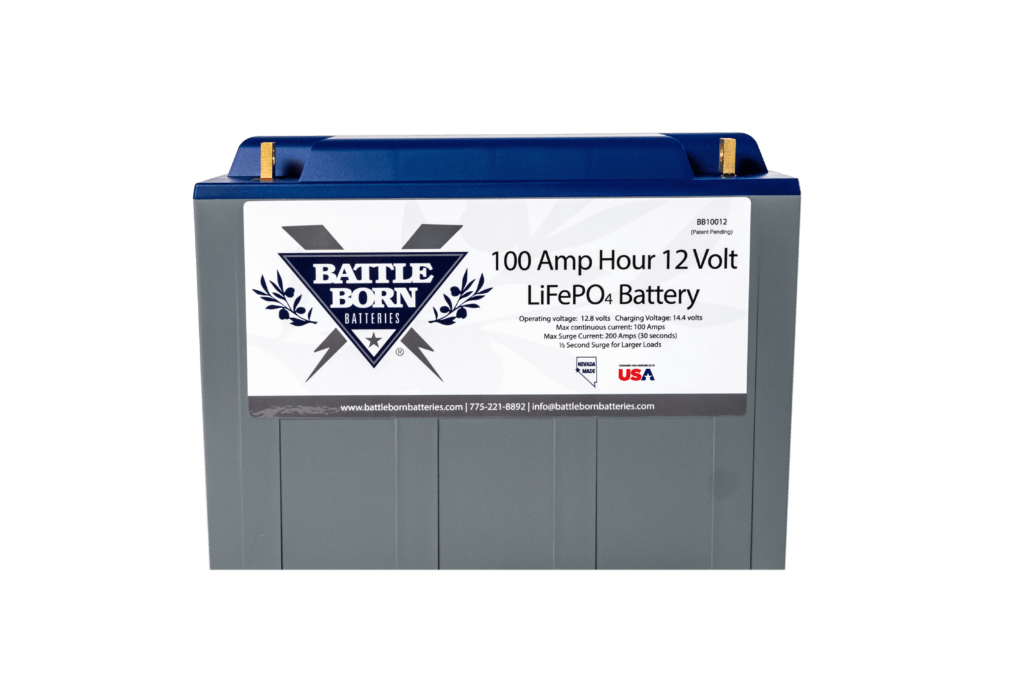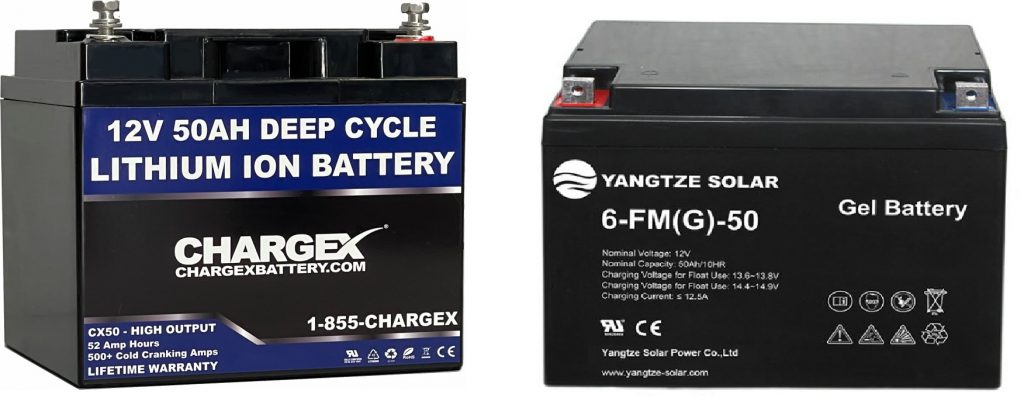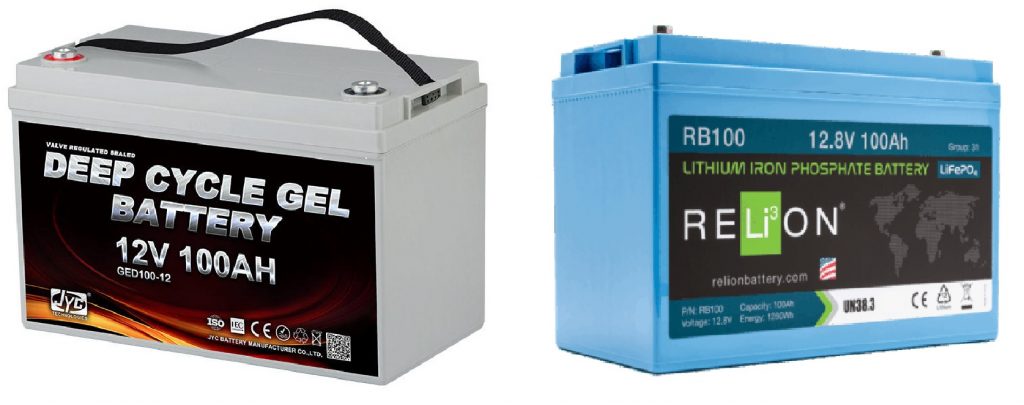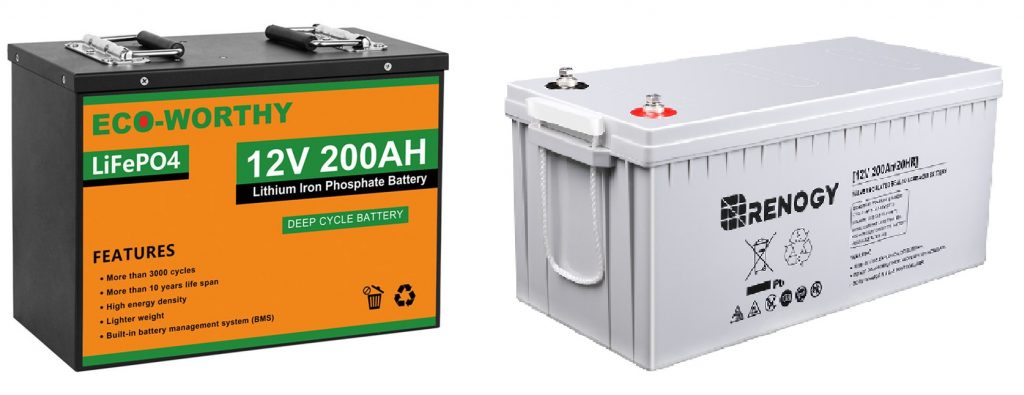Are you planning on purchasing a battery system? Then you’ve come to the right place; this battery size chart is going to come in handy!
It’s always a good idea to do some research before making a big purchase; an energy storage system is undoubtedly a big one. This system will shoulder the responsibility of your energy needs for years to come.
There is no shortage of batteries available in today’s market, but you need to make sure that you choose the right type and size according to your energy demand.
Cut corners while doing your research (or lack thereof), and you’ll end up with a battery bank that’s either too small or too large for your needs; that’s money and time down the drain.
This article will help you understand the different battery sizes and provide you with a complete battery size chart. By the end of it, you’ll learn how to size your battery bank according to your energy demand.
Table of Contents
Understanding Different Battery Sizes
To understand the different battery sizes, let’s first review a few key concepts:
Voltage
Also referred to as potential difference, is the force that pushes electrons around a circuit. Without voltage, electrons move randomly in any direction. By applying voltage, free electrons move in the same direction, creating current. The unit used for voltage is Volts (V).
Current
Current measures the flow of electrons passing through a certain point. The unit used for current is Ampere (A).
Batteries are used to store and provide electrical energy. They consist of one or more electrochemical cells where chemical reactions take place.
The basic components of a rechargeable battery are:
- Cathode
- Anode
- Electrolyte
- Separator
Reduction and oxidation reactions occur between the electrodes. These reactions convert chemical energy into electrical energy (and vice-versa).
In a battery, the amount of material that can suffer oxidation is directly proportional to the amount of energy this battery can store (and provide).
In other words, the more material a battery contains, the more chemical energy it can store.
Following this logic, it’s easy to understand that varying material quantities (that can suffer oxidation) create different battery sizes.
As a result, you’ll find batteries with different capacities, such as 10Ah, 50Ah, 100Ah, 200Ah, 300Ah, etc.
Important Note
In this article, the phrase “battery size” refers to a battery’s capacity, not its physical size.
Moreover, we’ll discuss the three main types of batteries used in solar battery banks: LiFePO4 and sealed lead-acid (SLA), namely AGM and Gel.
We’ll also limit our discussion to 12V batteries. 12V is the most common voltage for batteries used in standard energy storage systems.
How Do I Know What Size Battery I Need?
The size of your battery bank depends on how much energy you need to run your appliances; your battery system’s energy capacity should always be greater than your energy demand.
But how do you calculate your power demand?
Step 1: Estimate Your Energy Demand
What do you wish to power with your battery bank?
Each appliance has its voltage (in volts) and current (in amps) specifications. Applying a higher value than the recommended voltage and current can damage your appliance.
Another way to express these ratings is using power (in Watts). In physics, power is the product of voltage and current:
Power (W) = voltage (V) x current (A)
Once you’ve calculated the power that each appliance requires to function, you need to determine the amount of time (in hours) you wish to run each load.
For example, you usually run a fridge 24h a day. Considering that an RV fridge requires 70W on average, you’ll need 70W x 24h = 1680 Wh = 1,68 kWh to power this fridge for 24h.
The above calculation determined the fridge’s energy demand, expressed in watt-hours (Wh). You can calculate every load you wish to power with your battery bank. You just need to check the load specifications and use:
Energy required (Wh) = Power (W) x time (h) = voltage (V) x current (A) x time (h)
You also need to estimate your desired hours of autonomy
Continuing with our fridge example, if you wanted to run this fridge for two days before having to recharge your battery, your total energy demand would be 1,68kWh x 2 days = 3,36kWh.
Knowing this, you now need to find a battery with compatible specifications.
Step 2: Determine Your Battery Size
Batteries are rated by voltage and Amp-hours (Ah), as shown in the image below:

There are two ways to express battery capacity: its charge capacity (in Ah) or its energy capacity (in Wh).
Charge capacity represents the amount of current the battery can deliver in 1h until its voltage drops to a point where it can no longer “push” enough electrons (produce current). You calculate this using:
Charge Capacity (Ah) = Current (A) x time (h)
You probably won’t need to calculate amp-hours because your battery always shows this value on its case.
In turn, energy capacity expresses how much energy can be stored in/provided by a battery in 1 hour until the battery is depleted. You calculate this using:
Energy capacity (Wh) = Voltage (V) x Amp-hours (Ah)
After calculating your total energy demand (in Wh), you can find a battery that meets your energy demand by calculating the battery’s energy capacity (using voltage and amp-hours specifications).
Step 3: Consider Your Battery’s Usable Energy
You can discharge LiFePO4 batteries to 100% and AGM and Gel batteries to about 80% without causing much damage. However, doing this can shorten your battery’s lifespan.
Manufacturers usually recommend an 80% discharge ( 20% state of charge) for LiFePO4 batteries. And a 50% Depth of Discharge (DoD) for AGM and GEL batteries. Respecting these recommendations maximizes the number of cycles your battery will perform.
Example:, for a 12V 200Ah AGM battery, the usable energy would be:
Energy (Wh) = 12V x 200Ah = 2400Wh.
Considering 50% DoD, the usable energy = 2400Wh x 50% = 1200Wh.
Misleading Info
Another relevant observation is that battery capacity rating standards can be misleading. This means that the Ah advertised by manufacturers expresses the battery capacity in ideal conditions.
For example, a battery rated 200Ah can deliver 200A for 1h in ideal conditions.
Likewise, it can theoretically deliver 100A for 2h, 50A for 4h, 10A for 20h, 2A for 100h, etc.
In reality, though, these numbers aren’t accurate. Several factors decrease the rated battery capacity, such as temperature, rate of discharge, and Peukert’s Law.
In addition, for lead-acid batteries, the Ah rating is usually given at a “20-hour rate” or less often at a “10-hour rate”. This means that a 100Ah battery can only provide its 100Ah capacity during a 20h period (5A for 20h). If you connect the same battery to a 100A load, it might only last for a few minutes instead of the theoretical 1h.
With that in mind, we advise that you always account for capacity loss when determining your battery size demand. For instance, if you’ve done your research and calculated you need a 12V 360Ah battery bank, consider getting a bigger size battery bank (400Ah), so it will compensate for potential losses.
Battery Size Chart
Usable Energy Capacity
This first table shows the usable energy (in Watt-hours) for 12V LiFePO4 and Sealed lead-acid (AGM and Gel) batteries, rated for 10Ah, 50Ah, 100Ah, 200Ah, and 300Ah.
Additionally, it shows the energy capacity of each battery, taking into account the recommended depth of discharge (DoD) of each battery (80% for lithium batteries and 50% for lead-acid batteries):
| 10Ah | 50Ah | 100Ah | 200Ah | 300Ah | |
| 12V LiFePO4 (DoD 80%) | 96Wh | 480Wh | 960Wh | 1920Wh = 1,92kWh | 2880Wh = 2,88kWh |
| 12V AGM or Gel (DoD 50%) | 60Wh | 300Wh | 600Wh | 1200Wh = 1,2kWh | 1800Wh = 1,8 kWh |
Appliance Runtime Chart
Next, is a battery size chart showing how much time each battery can power a particular appliance. This chart considers the battery’s energy capacity (in watt-hours) and common appliances’ average power ratings (in watts).
Again, this battery size chart already considers the depth of discharge recommended to each battery. (Respecting the recommended DoD ensures your battery performs more cycles, this way, it lasts longer).
However, it doesn’t take into account the energy required by the inverter, to convert the DC (provided by battery) into AC (usually what powers appliances). So, if you want to get a more precise estimate, you should consider the energy your inverter requires to function properly.
| Battery | Phone charger (5W) | 1 LED Light (9W) | WiFi Router (10W) | Drone / Camera (40W) | Laptop (60W) | Ceiling Fan (70W) | Medium size TV (70W) | Water Filter and Cooler (80W) | RV Water Pump (100W) | Refrigerator (170W) | Power Tools (1000W) | Coffee Maker (1400 W) |
|---|---|---|---|---|---|---|---|---|---|---|---|---|
| 12V LiFePO4 100Ah | 192h | 106h | 96h | 24h | 16h | 13h | 13h | 12h | 9h | 5h | 0,9h | 0,6h |
| 12V LiFePO4 200Ah | 384h | 213h | 192h | 48h | 32h | 27h | 27h | 24h | 19h | 11h | 1h | 1h |
| 12V LiFePO4 300Ah | 576h | 320h | 288h | 72h | 48h | 41h | 41h | 36h | 28h | 16h | 2h | 2h |
| 12V SLA (AGM and Gel) 100Ah | 120h | 66h | 60h | 15h | 10h | 8h | 8h | 7h | 6h | 3h | 0,6h | 0,4h |
| 12V SLA (AGM and Gel) 200Ah | 240h | 133h | 120h | 30h | 20h | 17h | 17h | 15h | 12h | 7h | 1h | 0,8h |
| 12V SLA (AGM and Gel) 300Ah | 360h | 200h | 180h | 45h | 30h | 25h | 25h | 22h | 18h | 10h | 1h | 1h |
What Will a 10Ah Battery Run?

A 12V 10Ah battery has an energy capacity of 12V x 10Ah = 120Wh
Considering the recommended depth of discharge for each battery, here are their energy capacities:
12V 10Ah LiFePO4, 80% DoD: 12V x 10Ah = 120Wh x 80% = 96Wh*
12V 10Ah AGM or Gel, 50% DoD: 12V x 10Ah = 120Wh x 50% = 60Wh*
*The same calculation applies for different values of battery capacity (in Ah)
Example Appliances & Runtimes
| Appliance | 12V LiFePO4 | 12V AGM or Gel |
|---|---|---|
| Phone charger (5W) | 19h | 12h |
| 1 LED Light (9W) | 10h | 6h |
| WiFi Router (10W) | 9h | 6h |
| Drone / Camera (40W) | 2h | 1h |
| Laptop (60W) | 1h | 1h |
| Ceiling Fan (70W) | 1h | 0,8h |
| Medium size TV (70W) | 1h | 0,8h |
| Water Filter and Cooler (80W) | 1h | 0,7h |
What Will A 50Ah Battery Run?

12V 50Ah LiFePO4, 80% DoD: 12V x 50Ah = 600Wh x 80% = 480Wh
12V 50Ah AGM or Gel, 50% DoD: 12V x 50Ah = 600Wh x 50% = 300Wh
Example Appliances & Runtimes
| Appliance | 12V LiFePO4 | 12V AGM or Gel |
|---|---|---|
| Phone charger (5W) | 96h | 60h |
| WiFi Router (10W) | 48h | 30h |
| Drone / Camera (40W) | 12h | 7h |
| Laptop (60W) | 8h | 5h |
| Medium size TV (70W) | 6h | 4h |
| Water Filter and Cooler (80W) | 6h | 3h |
| RV Water Pump (100W) | 4h | 3h |
What Will A 100Ah Battery Run?

12V 100Ah LiFePO4, 80% DoD: 12V x 100Ah = 1200Wh x 80% = 960Wh
12V 100Ah AGM or Gel, 50% DoD: 12V x 100Ah = 1200Wh x 50% = 600Wh
Example Appliances & Runtimes
| Appliance | 12V LiFePO4 | 12V AGM or Gel |
|---|---|---|
| 1 LED Light (9W) | 106h | 66h |
| WiFi Router (10W) | 96h | 60h |
| Drone / Camera (40W) | 24h | 15h |
| Laptop (60W) | 16h | 10h |
| Water Filter and Cooler (80W) | 12h | 7h |
| RV Water Pump (100W) | 9h | 6h |
| Refrigerator (170W) | 5h | 3h |
| Coffee Maker (1400 W) | 0,6h | 0,4h |
What Will A 200Ah Battery Run?

12V 200Ah LiFePO4, 80% DoD: 12V x 200Ah = 2400Wh x 80% = 1920Wh = 1,92kWh
12V 200Ah AGM or Gel, 50% DoD: 12V x 200Ah = 2400Wh x 50% = 1200Wh = 1,2kWh
Example Appliances & Runtimes
| Appliance | 12V LiFePO4 | 12V AGM or Gel |
|---|---|---|
| Drone / Camera (40W) | 48h | 30h |
| Laptop (60W) | 32h | 20h |
| Ceiling Fan (70W) | 27h | 17h |
| Medium size TV (70W) | 27h | 17h |
| RV Water Pump (100W) | 19h | 12h |
| Refrigerator (170W) | 11h | 7h |
| Power Tools (1000W) | 1h | 1h |
| Coffee Maker (1400W) | 1h | 0,8h |
What Will A 300Ah Battery Run?

12V 300Ah LiFePO4, 80% DoD: 12V x 300Ah = 3600Wh x 80% = 2880Wh = 2,88kWh
12V 300Ah AGM or Gel, 50% DoD: 12V x 300Ah = 3600Wh x 50% = 1800Wh = 1,8kWh
Example Appliances & Runtimes
| Appliance | 12V LiFePO4 | 12V AGM or Gel |
|---|---|---|
| WiFi Router (10W) | 288h | 180h |
| Drone / Camera (40W) | 72h | 45h |
| Laptop (60W) | 48h | 30h |
| Medium size TV (70W) | 41h | 25h |
| Water Filter and Cooler (80W) | 36h | 22h |
| RV Water Pump (100W) | 28h | 18h |
| Refrigerator (170W) | 16h | 10h |
| Power Tools (1000W) | 2h | 1h |
| Coffee Maker (1400W) | 2h | 1h |
Final Thoughts
When it comes to sizing your battery bank, there are different types of batteries and capacities to choose from. Moreover, it can be confusing to determine what battery size you need for your specific needs.
We hope this battery size chart helps make this process easier for you by showing the most common battery sizes and some examples of appliances they can power – and most importantly – for how long.
With this information in hand, you’re now ready to find the perfect battery for your needs!

